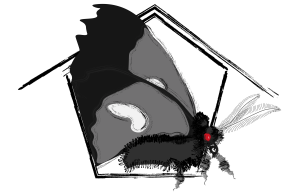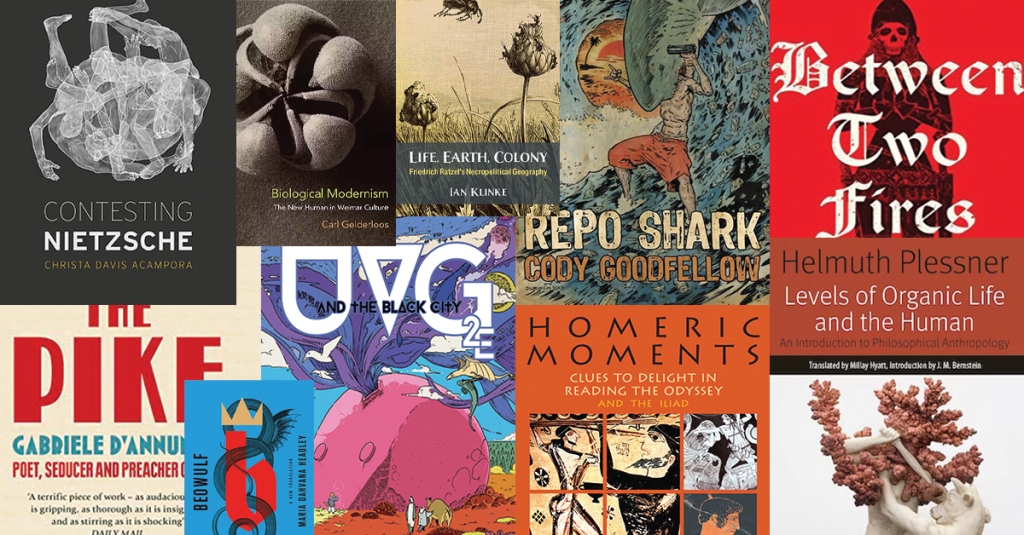
1. Christa Davis Acampora’s Contesting Nietzsche (2022): Single best piece of recent Nietzsche scholarship. Provides a selective, substantial overview of the importance of agonism for Nietzsche, which often gets downplayed, ignored, or subsumed into a general logic of argumentation. Also, engages seriously and significantly with the early Nietzsche, a topic of increasing personal and scholarly interest.

2. Christopher Buehlman’s Between Two Fires (2012): Medieval weird horror with some of the most powerful imagery and language I’ve encountered outside of Cormac McCarthy. Disturbing and moving in equal turn: part Ingmar Bergman (The Seventh Seal), part Lautréamont, part Ken Russell, and part Edith Wyschogrod. If any book could convert you, it’d be this one.

3. Eva Brann’s Homeric Moments: Clues to Delight in Reading the Odyssey and the Iliad (2002): Reading Brann herself is always a delight, because she manages to cover the classics with evocative profundity and scholarly depth, but also an extraordinarily light and playful touch. This is something the Straussian school often lacks. Where Seth Benardete (e.g., in his The Bow and the Lyre: A Platonic Reading of the Odyssey) can be cryptic or crushingly technical, Brann always opts for a more instructional tone, seemingly apt for new students, but which nevertheless always brings up new, transformative insights.

4. Carl Gelderloos’ Biological Modernism: The New Human in Weimar Culture (2019): Compelling case for adjusting or discarding the standard “mechanism vs. vitalism” narrative re: both early-to-mid-20th-century German intellectual culture and current conceptual debates in the life sciences. This matters because we are still stuck inside that narrative (and have been since at least the 1810s).

5. Cody Goodfellow’s Repo Shark (2014): Gonzo noir set in Hawaii, with a monstrous twist. Completely bonkers, in the best possible way. Goodfellow (like Jim Thompson or Cordwainer Smith) remains one of those absolutely stellar (post-)genre writers destined for rediscovery in twenty years.

6. Maria Dahvana Headley’s Beowulf: A New Translation (2020): Much-touted as a “feminist” translation of the Old English poem, Headley’s work deserves attention for simply being an excellent translation in its own right. It’s commonplace to observe that translation requires interpretation, but Headley’s purposeful anachronisms are neither glib nor tendentious, but, instead, clever and serious. Headley compares just fine to Seamus Heaney, J. R. R. Tolkien, etc. If anything, she captures the poem’s homosocial complexity and sense of humor better than most other translations (while still including its ambiguity, glories, and melancholy).

7. Lucy Hughes-Hallett’s The Pike: Gabriele d’Annunzio: Poet, Seducer and Preacher of War (2013): Philosophical biography at its best. It’s impossible to understand the 20th century without grasping the nature of political romanticism. While seemingly marginal, the bizarre, doomed “Impresa di Fiume” is a paradigm case of such romanticism (see also Robert Aickman’s Go Back at Once, which I have yet to digest).

8. Ian Klinke’s Life, Earth, Colony: Friedrich Ratzel’s Necropolitical Geography (2023): Despite dying in 1904, Ratzel’s ideas were misappropriated by Karl Haushofer and the NSDAP in the 1930s. He’s been largely ignored or marginalized ever since. Klinke’s volume is an outstanding work of intellectual history that explores Ratzel’s own idiosyncratic Politische Geographie on its own terms, as well as mapping out its problematic reception. Klinke is ultimately more critical than I’m inclined to be, but it’s still an excellent, even necessary volume.

9. Helmuth Plessner’s The Levels of Organic Life and the Human: Introduction to Philosophical Anthropology (1928/2019): First encountered Plessner under Richard Schacht’s guidance, alongside relatively programmatic overviews of the philosophical anthropologists Arnold Gehlen and Max Scheler. So, he’s been kicking around the back of my head for a while. Only recently did I reencounter Plessner’s sustained exploration of the concept of borders, which directly informs research I’m working on now.

10. Luka Rejec’s Ultraviolet Grasslands and the Black City 2E (2023): “A tabletop role-playing game book, half setting, half adventure, and half epic trip; inspired by psychedelic heavy metal, the Dying Earth genre, and classic Oregon Trail games.” Despite backing the 1E Kickstarter, which produced one of the most beautiful and evocative books I’ve ever seen, I’ve yet to get this to the table. Soon, I hope!
Runners-up: Jean-Pierre Dupuy’s A Short Treatise on the Metaphysics of Tsunamis (2005); Platiboo’s Vermis II – mist & mirrors (2023); James Herbert and Ian Miller’s The City (1993); Philip Rieff’s My Life Among the Deathworks: Illustrations of the Aesthetics of Authority (2006); Simon Sellars’ Code Beast (2023); Inez van der Spek’s Female Subjectivity and the Divine in the Light of James Tiptree’s ‘A Momentary Taste of Being’ (2000); Ian Watson’s The Jonah Kit (1975); Alexander Wendt’s Quantum Mind and Social Science: Unifying Physical and Social Ontology (2015)


Leave a comment